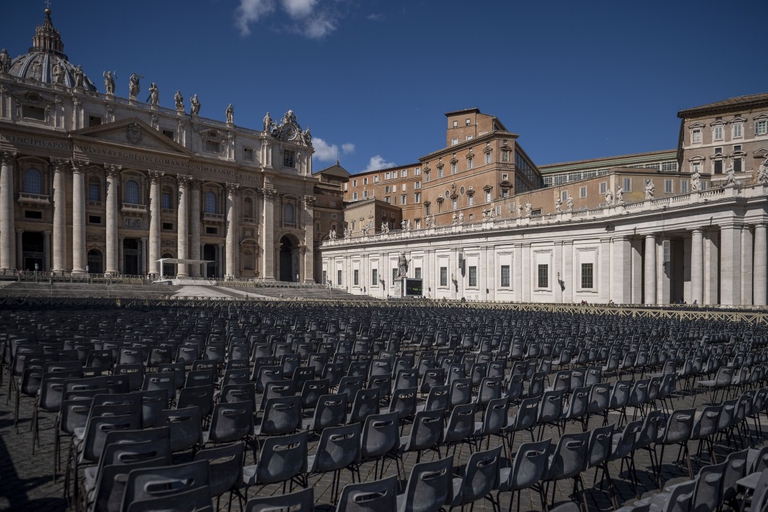
The second wave of the Covid-19 pandemic has shone a painful spotlight on the dire conditions of tea garden workers struggling against poverty in India.
The lockdown to stop the spread of the coronavirus has left cities eerily quiet. Across Italy, streets, squares and alleyways have been left deserted and with everyone at home, the emptiness is surreal.
If people really are the heart and soul of a city, what happens when they’re not there? What becomes of the streets, squares and hidden corners, the views of metropolises, towns and villages when once bustling and lively places are overcome by an eerie emptiness? On the 8th of March Italy officially became a protected zone, locked down to contain the novel coronavirus. Since then, its citizens have been asked to stay at home, avoiding all non-essential movement. Life in public places has been put on pause. Shutters have been lowered, offices closed, events cancelled. People have gone back into their homes, doing their bit to ensure that this moment passes as quickly as possible.
Italy’s largest cities usually welcome hordes of tourists every day of the year, but now they look like empty stages pervaded by a surreal and quiet calm. San Marco Square lies empty, with no one sitting at the tables outside the Venetian restaurants and bars. Milan’s Central Station, one of the country’s busiest, feels strange without the bustle of commuters and travellers. San Pietro Square has lost its flock and universities their students. Each place is deprived of what gave it life. We’ve chosen these photos for a virtual tour of the cities that are fighting against the coronavirus, trying to resist the pandemic’s advance in the hope that soon, when the worst is over, their streets and squares will be filled with new energy and life.
Siamo anche su WhatsApp. Segui il canale ufficiale LifeGate per restare aggiornata, aggiornato sulle ultime notizie e sulle nostre attività.
![]()
Quest'opera è distribuita con Licenza Creative Commons Attribuzione - Non commerciale - Non opere derivate 4.0 Internazionale.
The second wave of the Covid-19 pandemic has shone a painful spotlight on the dire conditions of tea garden workers struggling against poverty in India.
In response to a lack of public services, organisations and individuals are helping citizens weather the devastating Covid-19 crisis in India.
A study indicates that the zoonotic origins of coronavirus may have been favoured by global warming’s impact on the conditions for bat habitats.
While Africa’s Covid-19 response has been praised by some, the pandemic has triggered the continent’s first recession in 25 years.
In Coronation, a documentary filmed by the people of Wuhan, the dissident Chinese artist documents the government’s rigid control during lockdown.
David Nabarro of the WHO analyses worldwide actions against the pandemic. Lockdowns alone aren’t a sustainable response to stopping Covid-19.
Kenya may fail to meet its target of ending female genital mutilation by 2022 as Covid-19 school closures have seen more girls undergo the illegal practice.
Helsinki Airport has begun implementing a Covid-19 test which is both noninvasive and simple. The exceptional nurses involved are dogs.
The drop in air pollution during worldwide lockdowns helped prevent thousands of premature deaths. But the situation is returning to pre-crisis levels.








